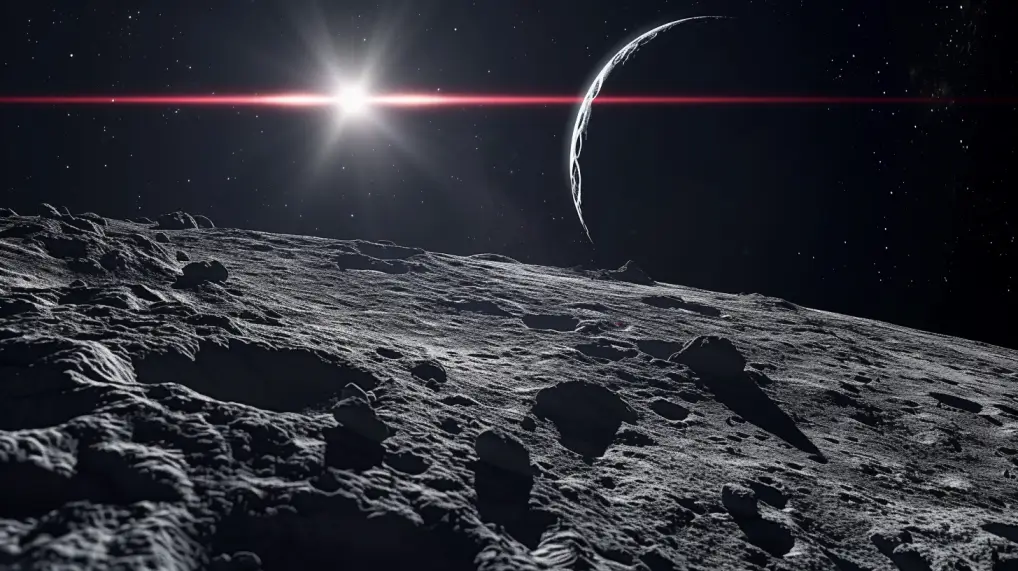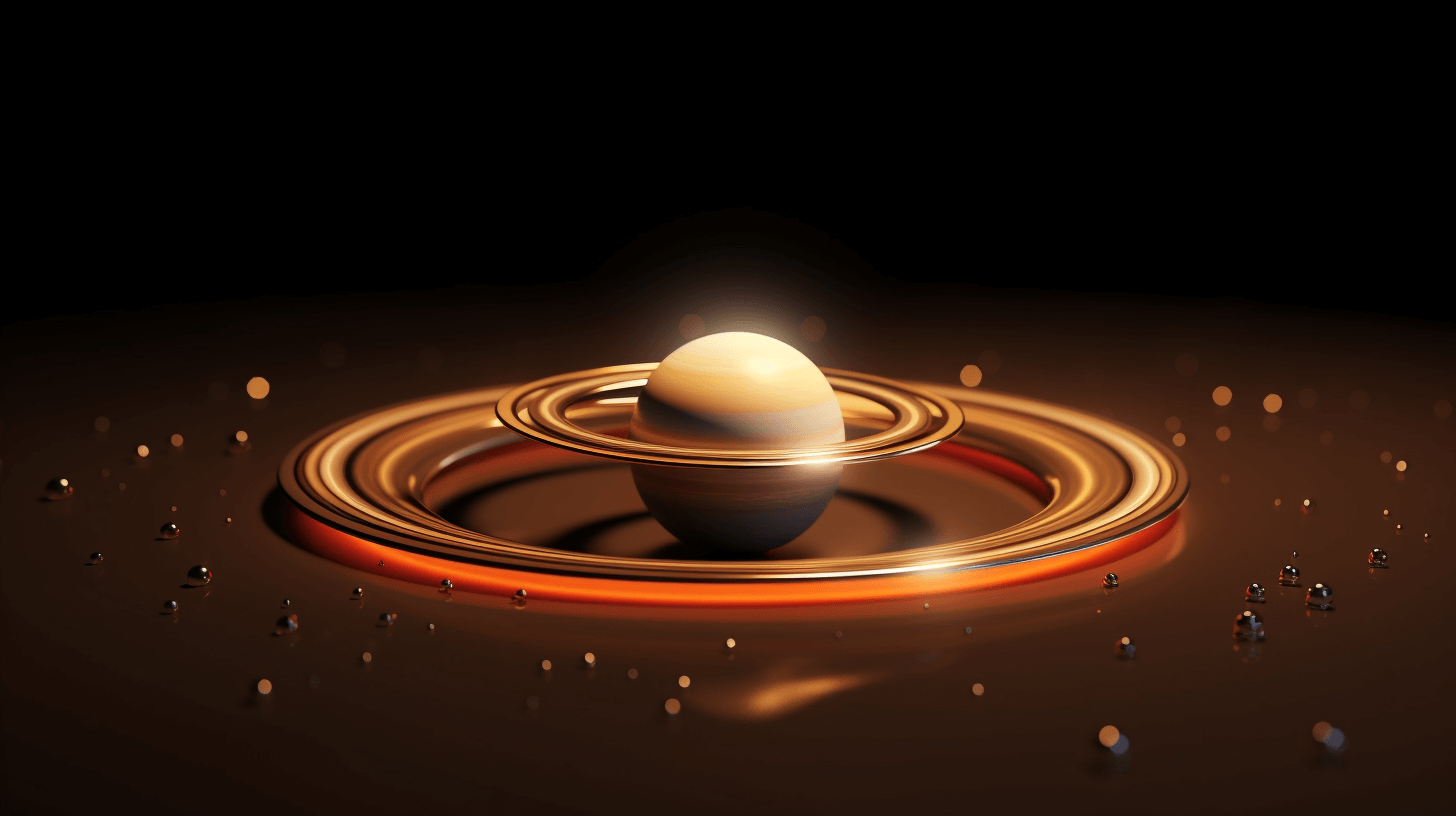🌔💥 Da Moon Get Ping: NASA’s Laser Reach Indian Moon Lander!
⬇️ Pidgin | ⬇️ ⬇️ English
Eh, you guys heard da latest? NASA’s LRO, dat’s da Lunar Reconnaissance Orbiter, wen do something super cool – it wen ping da Indian moon lander! Dat’s right, wit one laser instrument, no less! 🚀🌌
So here’s da scoop: Da LRO, which stay orbiting da moon, get dis fancy laser gadget onboard. And guess what? It wen successfully ping da Indian moon lander, which stay parked up dea on da lunar surface. Dis not just any kine ping, brah, dis one big deal in da world of space exploration. 🛰️🌖
Da whole ting went down like dis: Da LRO, cruising around da moon, wen aim its laser and wen shoot one beam straight to da lander. And boom! Da signal wen bounce back, confirming dat da lander is dea and ready for action. Dis kinda technology, it’s like da high-tech version of “Marco Polo” but instead of swimming pools, we talking about da vastness of space! 🌠🛰️
Now, da LRO no just cruising up dea for fun. Dis satellite get one major kuleana (responsibility). It stay up dea snapping photos, taking measurements, and doing all kine important research to help us understand da moon betta. And now, wit dis successful ping to da Indian moon lander, da LRO proving its worth even more.
Dis successful ping is more than just one message going back and forth in space. It’s like one bridge between Earth and da moon, connecting different countries and their space missions. Imagine, one laser beam traveling through space, reaching out and touching a spacecraft millions of miles away. Dat’s da stuff of science fiction, but it’s happening right here and now, fo’ real! 📡🌑
Da Indian moon lander, part of India’s Chandrayaan mission, is like one ambassador on da moon, representing human curiosity and da spirit of exploration. And wen da LRO wen ping it, it’s like giving one high-five across da cosmos, showing dat we can work together, even in da most far-out places.
But no think dis is just about sending signals. Dis ping helps scientists big time. Dey can learn more about da lander’s location, da conditions on da moon’s surface, and even plan future missions. It’s like da LRO is da moon’s own lighthouse, guiding da way for da next generation of explorers. 🌕🔭
So da next time you look up at da moon, just think: dea’s more going on up dea than you might realize. From da LRO sending laser beams to da Indian moon lander, to scientists on Earth analyzing da data, da moon is not just one rock in da sky. It’s one bustling hub of exploration, innovation, and international cooperation. And dat, my friends, is truly out of dis world! 🌌🌍✨
Da LRO’s successful ping is one small step for technology, but one giant leap for global space collaboration. And who knows? Maybe one day, we gonna be da ones getting pinged from da moon, looking up and waving back. Until den, we keep watching, learning, and dreaming about da next big ting in space exploration. Over and out! 🚀🌕✨
NOW IN ENGLISH
Moon Connection: NASA’s Laser Hits Indian Moon Lander! 🌔💥
Have you caught the latest buzz? NASA’s Lunar Reconnaissance Orbiter (LRO) just did something incredibly cool – it successfully pinged the Indian moon lander with a laser instrument! Yes, you heard it right! 🚀🌌
Here’s what went down: The LRO, which has been circling the moon, is equipped with this high-tech laser device. And what do you know? It managed to make a successful connection with the Indian moon lander, stationed right there on the lunar surface. This isn’t just any ordinary ping; it’s a monumental moment in the realm of space exploration. 🛰️🌖
The process was quite something: As the LRO made its rounds around the moon, it aimed its laser and fired a beam straight at the lander. And voila! The signal bounced right back, confirming the presence and readiness of the lander. This technology is like the space version of “Marco Polo,” but instead of a game in the pool, it’s a cosmic call and response! 🌠🛰️
The LRO isn’t just up there for a leisurely spin. This satellite has a serious mission (or kuleana, as we say). It’s busy snapping photos, gathering data, and conducting vital research to deepen our understanding of the moon. And with this successful ping to the Indian moon lander, the LRO is showing its incredible value.
This successful laser connection is more than a simple exchange of signals in space. It symbolizes a cosmic bridge between Earth and the moon, linking diverse nations and their ambitious space missions. Picture it: a laser beam journeying through the cosmos, reaching a spacecraft millions of miles away. It’s like a scene from a sci-fi novel, but it’s happening right now, in reality! 📡🌑
The Indian moon lander, part of India’s Chandrayaan mission, serves as a lunar envoy, embodying human inquisitiveness and the drive for discovery. And when the LRO pinged it, it was akin to a cosmic high-five, illustrating how collaboration can thrive, even in the most remote corners of space.
But this isn’t just about sending and receiving signals. This ping is incredibly beneficial for scientists. It allows them to gather more information about the lander’s exact location, the lunar surface’s conditions, and even aids in planning future missions. The LRO acts like a lunar beacon, illuminating the path for forthcoming explorers. 🌕🔭
So, the next time you gaze at the moon, remember: there’s a lot more happening up there than meets the eye. From the LRO’s laser pings to the Indian moon lander, to the teams of scientists on Earth poring over the data, the moon is a dynamic hub of discovery, innovation, and international collaboration. And that, my friends, is genuinely astronomical! 🌌🌍✨
The LRO’s triumphant ping represents a small stride for technology but a colossal leap for global space partnership. Who knows, perhaps one day it’ll be us receiving pings from the moon, looking upwards and acknowledging the cosmic connection. Until then, we’ll keep observing, discovering, and envisioning the next frontier in space exploration. Signing off! 🚀🌕✨







